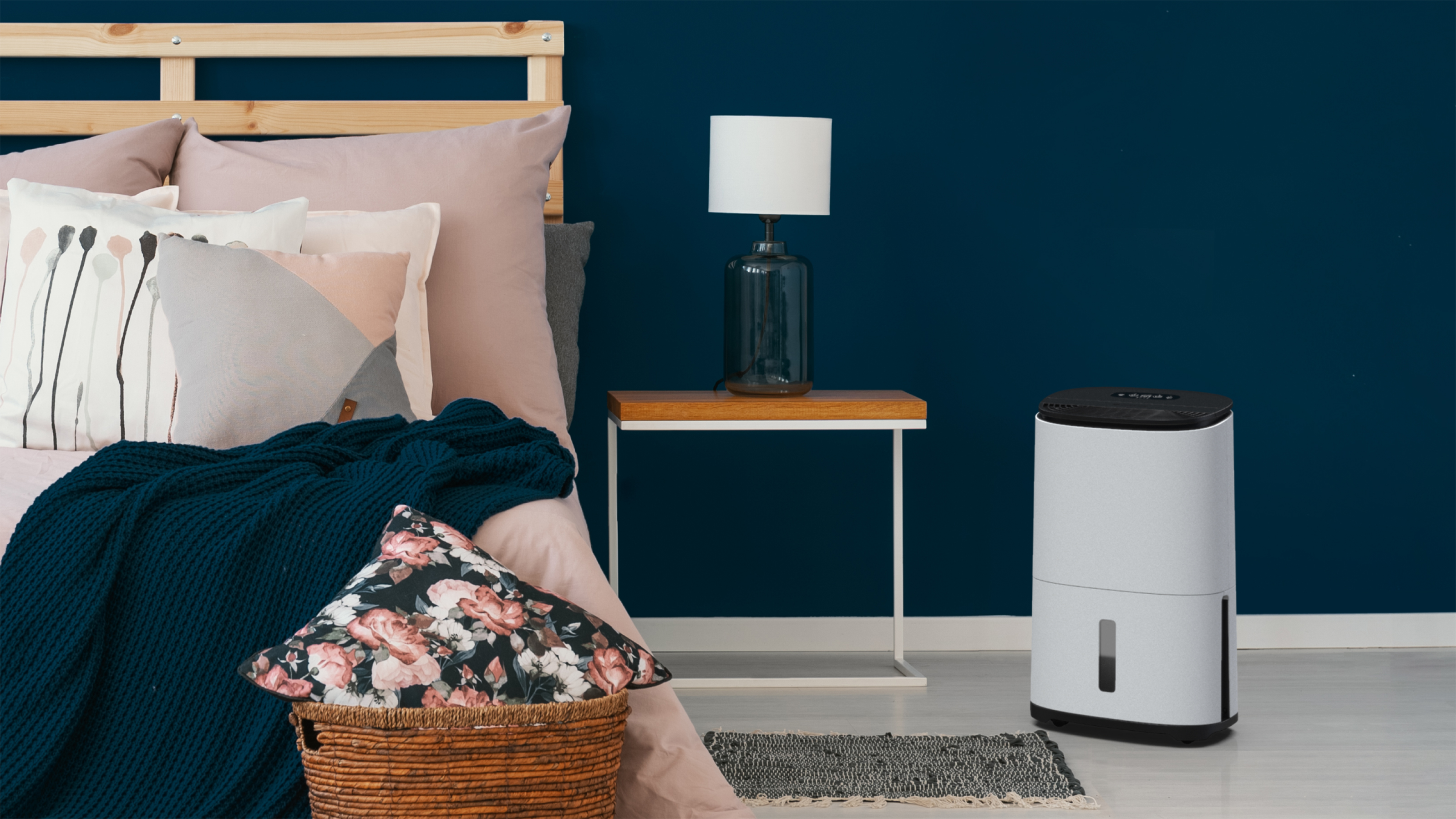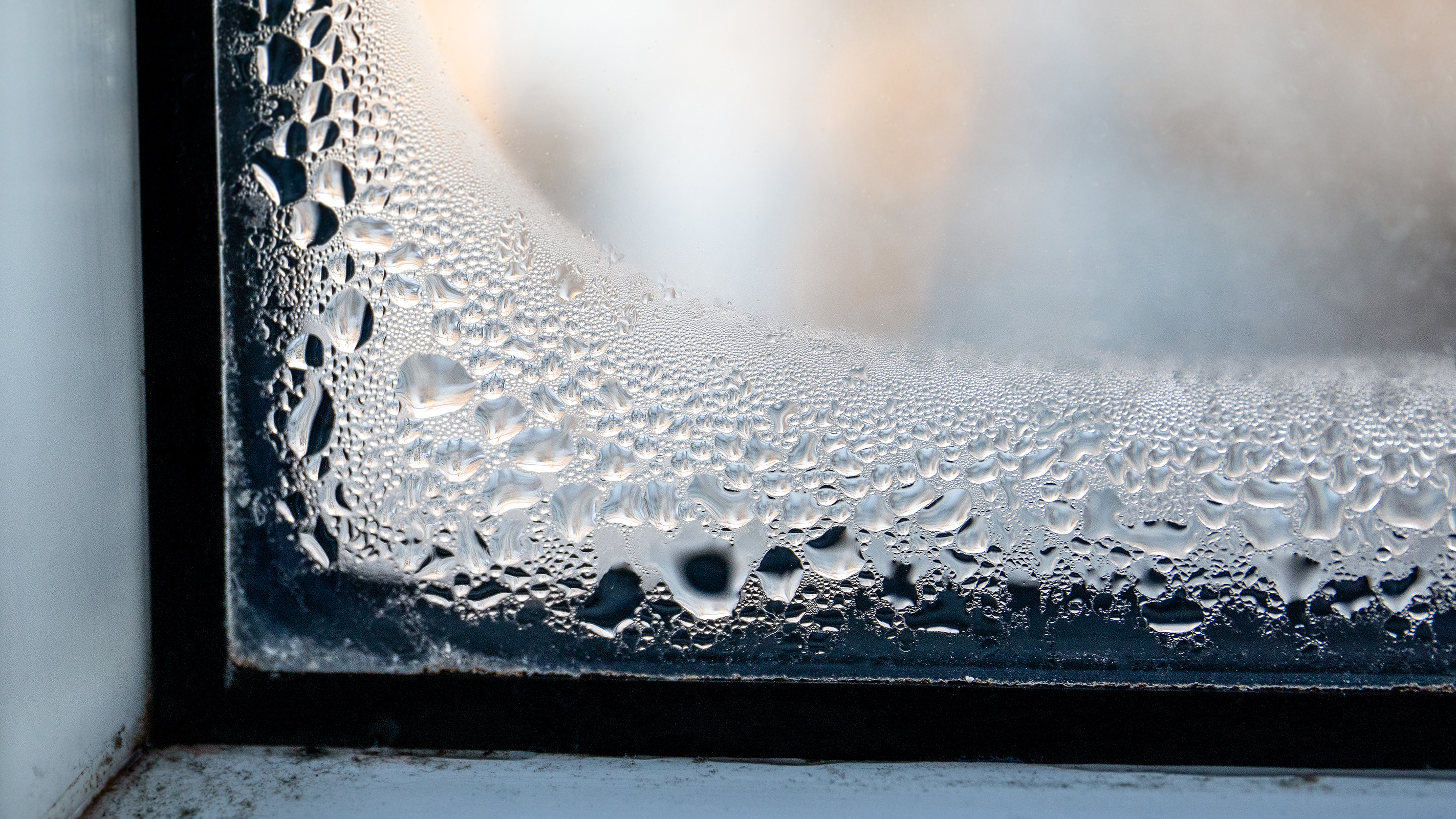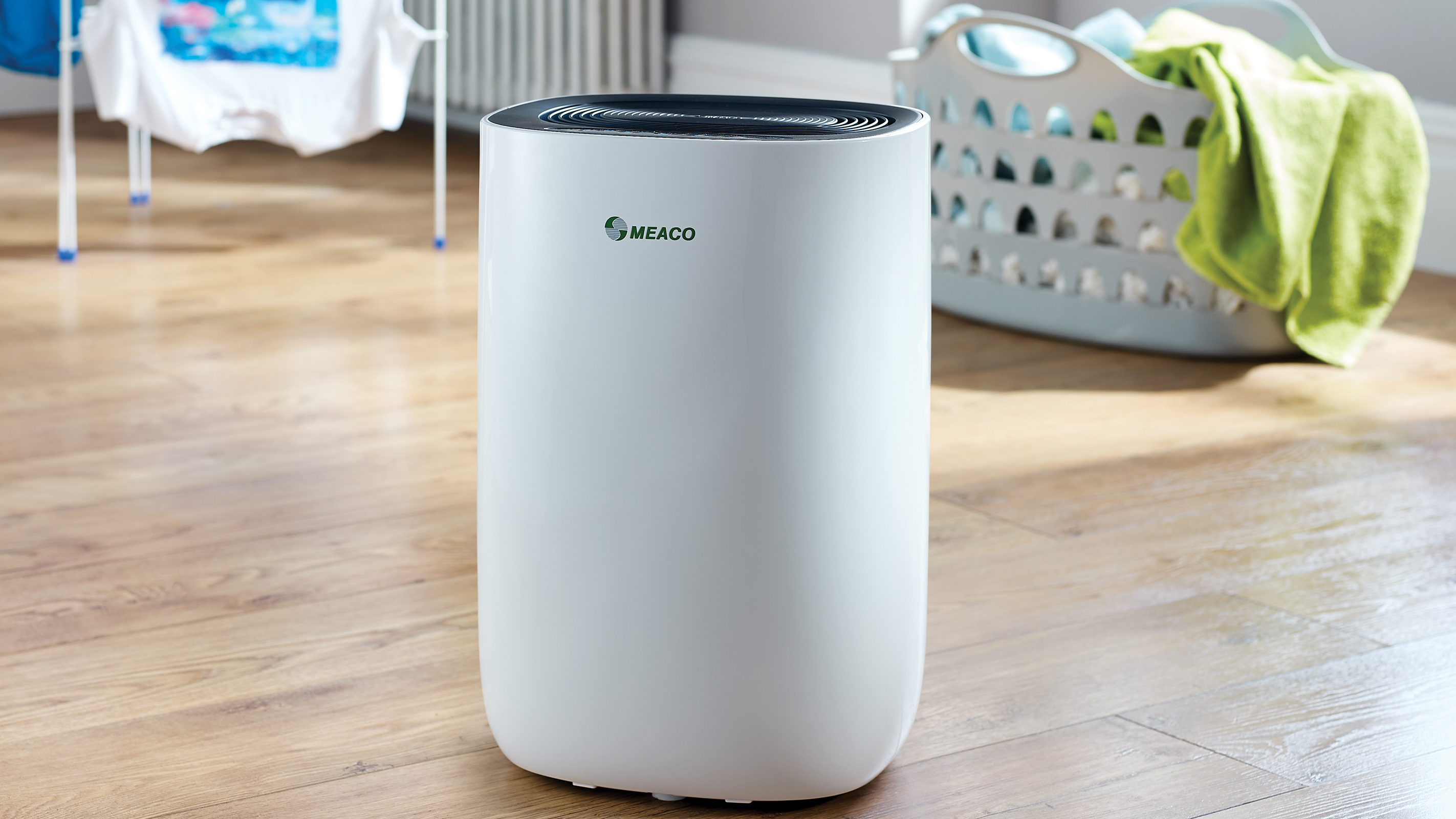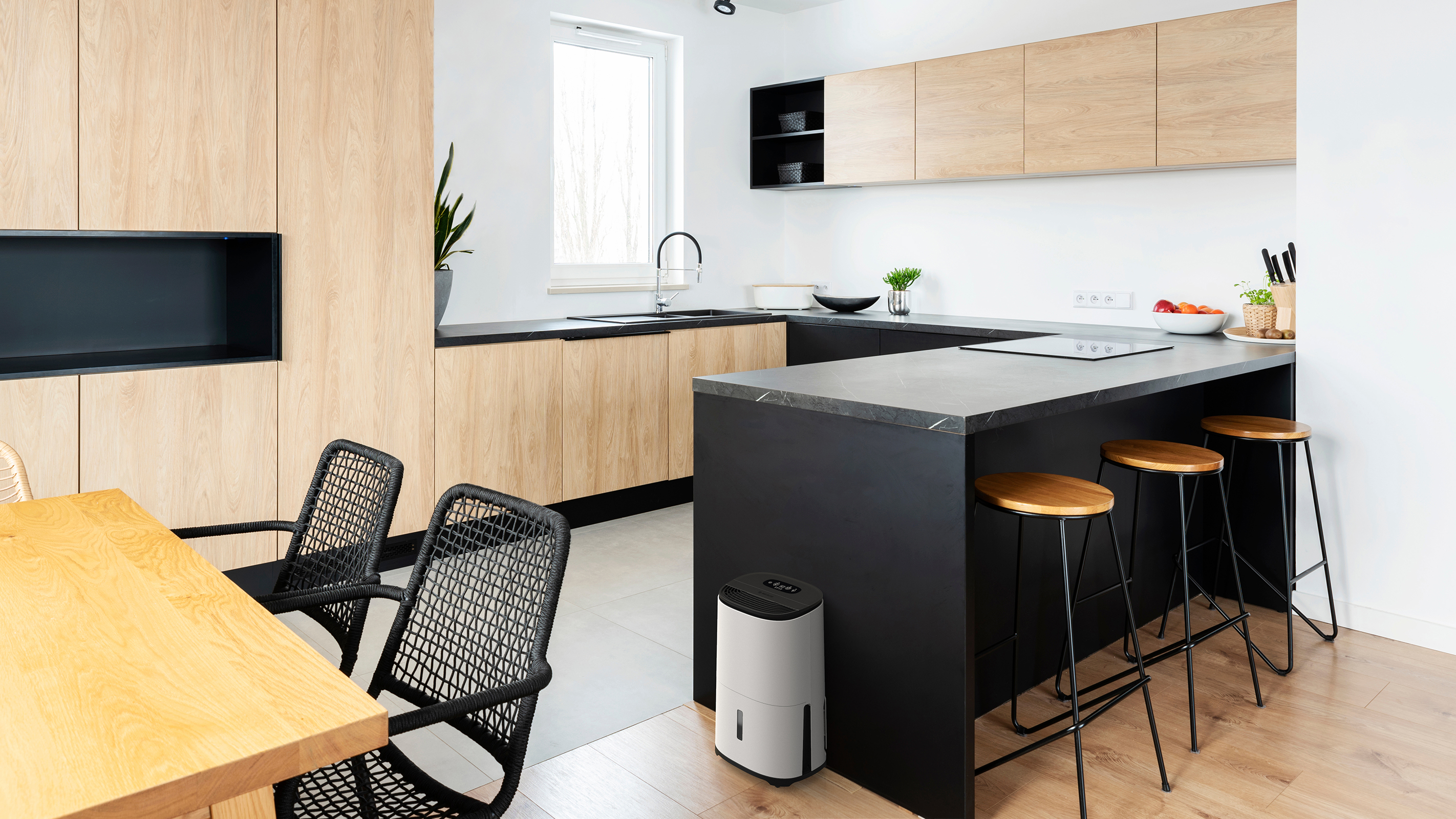How do dehumidifiers work and could they help dry clothes?
Just how do dehumidifiers work? We take a look at how they can help keep your house condensation and damp-free — plus investigate whether or not they can help dry wet washing

Here, we answer the question 'how do dehumidifiers work?' so that you can decide whether this is an appliance that you should be investing in.
Perhaps you are looking at how to stop condensation in your home now that outside temperatures have begun to fall, or maybe you are struggling with a damp problem and after solutions. Maybe, like so many of us right now, you are searching for methods of drying wet washing that don't involve running your tumble dryer.
"Usually, people choose to have a dehumidifier to remove water from air," explains Chris Michael, Meaco’s Managing Director. "Excess moisture causes condensation, which in turn can turn into damp problems. Damp brings more than just unsightly patches on the walls — the dust mite thrives in damp conditions, which can affect people with asthma or allergy problem. And, of course, damp causes mould, which can be difficult to get rid of."
For whatever reason you are considering buying a dehumidifier, we are here to explain the science behind them and how using one in your home could just be the answer to all your excess moisture misery.
How do dehumidifiers work?
First things first, if you are thinking of buying a dehumidifier it makes sense to look into exactly how they work and what they can be used for.
Although this is an appliance which often springs to mind for those looking at how to reduce humidity in a house, many people don't actually understand how they operate or the other benefits they can offer.
"The air in your home contains moisture. And you can add to this moisture by the things you do at home — cooking, showering, drying washing and so on," says Chris Michael from Meaco. "When warmer, moist air hits colder air, the moisture condenses into water. That is when you start to notice damp and mould, sometimes on walls and windows and sometimes, more worryingly, on soft furnishings and even your clothes.
"A dehumidifier removes moisture from the air — excess moisture that you do not want to condense and hang around your home. It helps to ease damp problems, gives you healthier air to breath and can even make your energy use more efficient."
It is one thing understanding the reasons behind why people might think about investing in a dehumidifier, but just how do they perform the task of removing moisture from the air and are some types of model better than others?
How do different types of dehumidifier work?
"There are two main types of dehumidifier — the desiccant dehumidifier and the compressor dehumidifier," explains Chris Michael. "You need to know the difference so you can decide on which type is best for your home.
"Compressor units run on a refrigerant. So, just like a fridge if they get too cold, they go into defrost. While this is not a bad thing, and the units will do this cycle from time to time, you don’t want to spend your money on a machine that will defrost more than it will dehumidify. If it is going to be used in a space where the temperature goes below 15 degrees centigrade, a desiccant variety will be better."
To ascertain which type of dehumidifier will be best for you, familiarise yourself with how each works:
- Desiccant dehumidifiers: These are perfect for colder areas of the house, such as garages and storerooms — basically spaces where there is little or no heating. "The air is drawn in over a filter and passed over an absorbent material called Zeolite," says Chris Michael. "When the material is saturated, a heater in the dehumidifier blows warm dry air across the Zeolite and the moisture condenses into water which is then dropped into a collection tank. The warm air is then passed back out of the dehumidifier at a higher temperature than the air that was taken in, so this dehumidifier can also act as a gentle heater."
- Compressor dehumidifiers: This is the model you should be looking at if your aim is to prevent damp and help clothes dry quicker. They are best for use in areas with temperatures above 15˚C.
"This type of dehumidifier draws in the air but instead of using the absorbent Zeolite, compressors have a cold-coils system, like a fridge," says Chris Michael. "These types of dehumidifiers are often also referred to as ‘refrigeration dehumidifiers’. They have two sets of coils, the first cools to create the condensation, which is collected into the water tank, the second warms the dry air back to just above room temperature. This helps to create the dry air needed to combat condensation, mould and damp problems."
Will a dehumidifier stop window condensation?
Dehumidifiers are a great way to prevent or reduce window condensation. How effective they are at doing this relies on choosing the right type and the size of the model.
Of course, opening the windows in a room will also help with condensation, but in the depths of winter, do you really want to bring freezing cold air gushing into your home?
As we have discussed, dehumidifiers remove excess moisture from the air — moisture that would otherwise be deposited on your windows as condensation. Place your dehumidifier close to the window for maximum effect.

Do dehumidifiers stop damp?
When it comes to what causes damp, there are several culprits. However, a damp problem that has been caused by poor ventilation and excess condensation can most certainly be helped by the use of a dehumidifier. That said, if damp is a persistent issue, caused by other factors concerning the structure of your home, a different and more involved solution is going to be required long term.
"The permanent use of dehumidifiers is a poor substitute for efficient heating and adequate ventilation when it comes to dealing with damp," says Douglas Kent, a chartered building surveyor specialising in building conservation and the technical and research director at the Society for the Protection of Ancient Buildings (SPAB).
Can you use a dehumidifier for drying wet clothes indoors?
All their condensation and damp fighting powers aside, do dehumidifiers dry clothes?
Happily, the answer is yes, you can use dehumidifiers to dry your laundry faster — providing you choose the right model.
Be on the look out for a model with a 'laundry mode' or 'clothes drying mode'. These settings filter out moisture from the air around the drying washing before blowing warmed air back out. Ensure you place the machine where the washing will benefit from this warm air flow and shut the door to the room the washing is hanging in.
"Dehumidifiers are effective at drying washing indoors and use considerably less electricity than tumble dryers," says Chris Michael. "Look for dehumidifiers that have a dedicated laundry mode, where the machine runs up to six hours before switching itself off to save energy."

Are dehumidifiers expensive to run?
The rising cost of energy is leaving many people worried about what their appliances are costing them to run, so it is understandable that you may be concerned about dehumidifier running costs.
What your chosen model costs to run will very much depend on its power rating and how much you pay for electricity per kWh. From October 2022, following the energy price guarantee, the national average price of electricity is 34p/kWh.
So, if you were to choose a model such as the Meaco Dry Arete® One 10L Dehumidifier/Air Purifier, which has a power consumption of 151 watts at 20°C and 60% relative humidity, you could expect to pay 5p per hour to run it.
"For energy savings, look for models which use a humidistat, which means the dehumidifier switches itself off when the target humidity is reached, only switching on again if it detects an increase in humidity," advises Chris Michael. "Consumers should look out for dehumidifiers that use excessive amounts of electricity, some are 400 watts plus — avoid them!"
What size dehumidifier do I need?
The right size of dehumidifier for you will be one that is capable of handling the amount of moisture produced in your home without you having to constantly empty the tank, as well as one that physically doesn't take up too much space.
You will also need to think about cost — the larger the dehumidifier, the higher its price tag is likely to be. The size of a dehumidifier affects how much water it can extract over a given period of time and dehumidifiers come with different sized water tanks, all suitable for a variety of sizes of rooms in your home.
In smaller rooms look at models with 10L or 12L tanks, while if it is larger space or an open-plan area, you might be better off looking at tank sizes of 20L or 25L.

Get the Homebuilding & Renovating Newsletter
Bring your dream home to life with expert advice, how to guides and design inspiration. Sign up for our newsletter and get two free tickets to a Homebuilding & Renovating Show near you.
Natasha was Homebuilding & Renovating’s Associate Content Editor and was a member of the Homebuilding team for over two decades. In her role on Homebuilding & Renovating she imparted her knowledge on a wide range of renovation topics, from window condensation to renovating bathrooms, to removing walls and adding an extension. She continues to write for Homebuilding on these topics, and more. An experienced journalist and renovation expert, she also writes for a number of other homes titles, including Homes & Gardens and Ideal Homes. Over the years Natasha has renovated and carried out a side extension to a Victorian terrace. She is currently living in the rural Edwardian cottage she renovated and extended on a largely DIY basis, living on site for the duration of the project.

